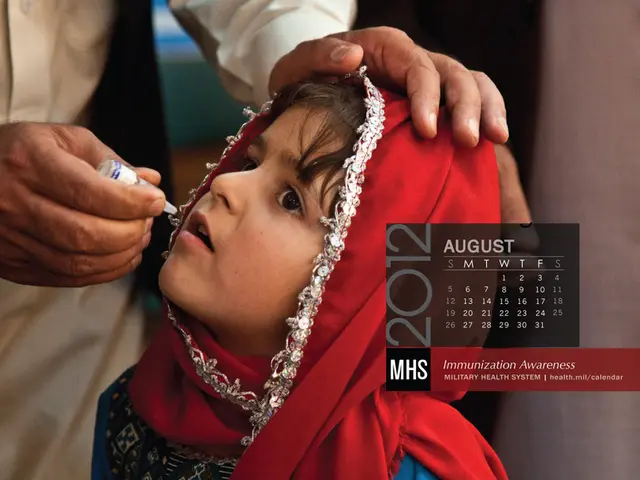Connection between Breast and Ovarian Cancer: Identified Links and Risk Factors
Here's a fresh take on the article, integrating relevant insights from the enrichment section:
Engage in a hard-hitting exploration of the connection between breast cancer and ovarian cancer, bared by common genetic and lifestyle factors.
Breast and Ovarian Cancer: An Uncanny Relationship
It's a tough truth that breast cancer and ovarian cancer often go hand in hand, primarily due to shared genetic factors. Specifically, individuals carrying mutations in the BRCA1 and BRCA2 genes face a steep increase in the risk for both cancers.
Genes, the Silent Killers
BrCA mutations in the BRCA1 and BRCA2 genes are well-known risk factors for both breast and ovarian cancers. According to research, around 12% of families with breast and ovarian cancer exhibit BRCA1 gene mutations, while about 20% have BRCA2 mutations.
Other rare genetic syndromes also pose a risk, with their DNA mistakes often part of larger hereditary cancer syndromes.
It's All About the Lifestyle
Age, family history, and lifestyle choices have their roles to play as well. As the years tick by, both cancers become more prevalent in women, particularly those past 50 for breast cancer and post-menopause for ovarian cancer. A family history of either cancer in first-degree relatives can boost the risk for both cancers.
While not as strongly linked with ovarian cancer, factors like obesity and alcohol consumption raise the risk for breast cancer. Evidence on these lifestyle choices' direct impact on ovarian cancer is less substantiated.
Conversely, pregnancy and breastfeeding can decrease the risk of ovarian cancer, as they minimize ovulation cycles. While they don't directly lower breast cancer risk, they offer overall health benefits.
Playing Offense: Screening and Prevention
Early detection and preventive measures are essential for those at high risk. Regular mammograms are the cornerstone of breast cancer screening, while ovarian cancer screening is trickier, involving ultrasounds, CA125 blood tests, and pelvic exams for high-risk individuals.
The Battlefield: Age, Time, and Genes
The age at diagnosis and time elapsed between the two cancers are considerable predictors of survival. An analysis suggests that individuals diagnosed with both primary breast cancer and primary ovarian cancer have a relatively positive outlook, with 5- and 10-year overall survival rates around 90% (2020 observational study).
However, ovarian cancer following breast cancer often progresses undetected, diminishing survival chances.
Time to Take Action
If signs or symptoms of breast or ovarian cancer appear or there's a personal or family history of these diseases, consult a healthcare professional immediately. Staying vigilant for signs of recurrence or a second cancer is crucial after a previous diagnosis.
Discover more evidence-based information and resources for cancer on our dedicated hub.
Remember, knowledge is power. Embrace it, wield it, and fight the fight alongside the right experts. Let the power of knowledge empower you in the face of adversity.
[FAQ section]
References:
- American Cancer Society. (2021). Ovarian Cancer Risk Factors. https://www.cancer.org/cancer/ovarian-cancer/causes-risks-prevention/risk-factors.html
- Mayo Clinic. (2021). Breast Cancer Screening. https://www.mayoclinic.org/tests-procedures/mammogram/about/pac-20384543
- National Cancer Institute. (2021). Breast Cancer Risk Factors. https://www.cancer.gov/about-cancer/causes-prevention/risk/risk-factors/breast-risk-factors
- National Cancer Institute. (2021). Ovarian Cancer Risk Factors. https://www.cancer.gov/types/ovarian/hp/ovarian-risk-factors-pdq
- Rosalind Franklin University of Medicine and Science, Chicago Medical School. (n.d.). Breast and Ovarian Cancer Risk Factors and Protective Factors. https://www.rosalindfranklin.edu/cms/research/science-and-health/EvidenceBasedCancerCare/breast_and_ovarian.aspx
- Females with breast cancer may also face an increased risk of developing ovarian cancer, as both cancers often share common genetic factors, particularly mutations in the BRCA1 and BRCA2 genes.
- Awareness of the hereditary cancer syndromes linked to rare genetic mutations is crucial, as these syndromes can pose a risk for both breast and ovarian cancers.
- Lifestyle choices, such as age, family history, obesity, alcohol consumption, pregnancy, and breastfeeding, can have varying impacts on the risks of developing breast and ovarian cancer.
- Regular medical screenings, including mammograms for breast cancer and ultrasounds, CA125 blood tests, and pelvic exams for high-risk individuals, play an essential role in early detection and prevention of these diseases.
- The age at diagnosis and the time interval between primary breast and ovarian cancers are significant predictors of survival rates, with many individuals displaying a relatively favorable 5- and 10-year overall survival rate.
- If there are signs or symptoms of breast or ovarian cancer, or a personal or family history of these diseases, prompt consultation with a healthcare professional is essential for women's health, health-and-wellness, and oncology concerns.








